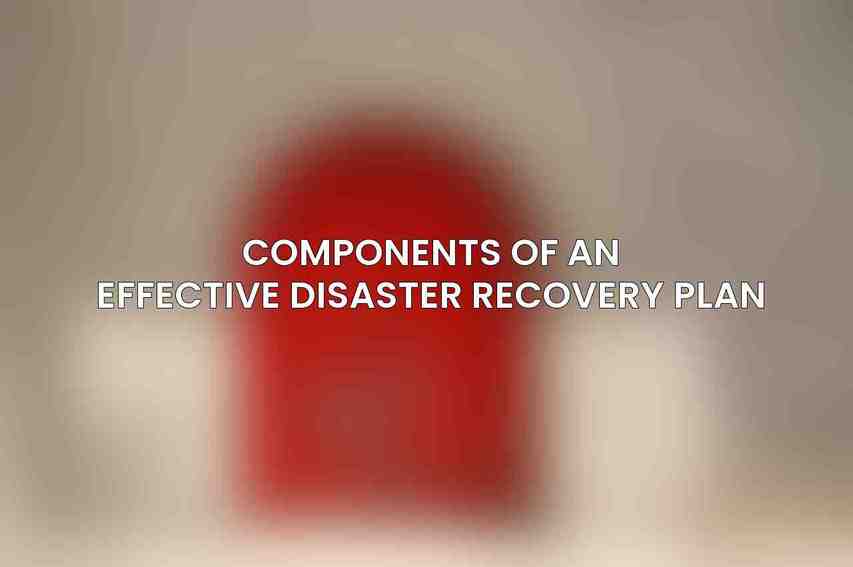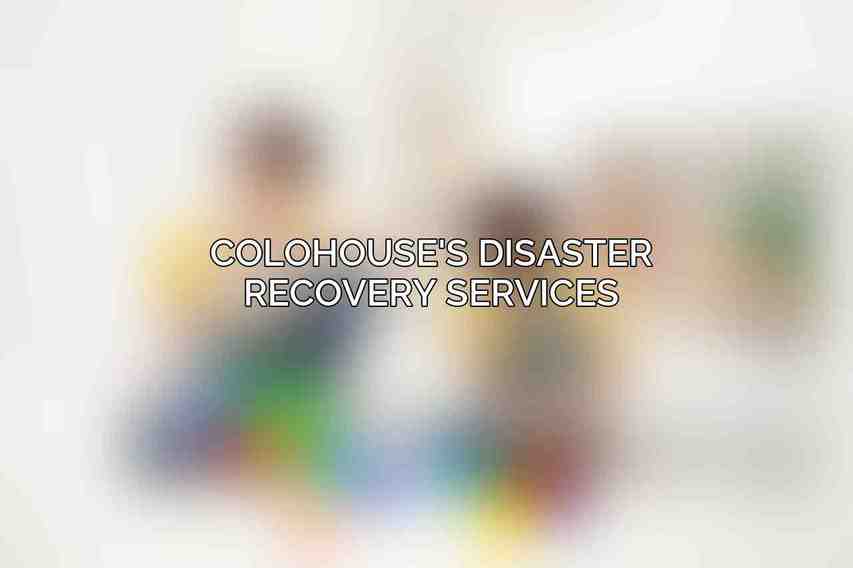At the forefront of data center solutions and disaster recovery planning, Colohouse stands out as a prominent provider offering cutting-edge services to ensure business continuity in the face of unforeseen disruptions. Disaster recovery planning involves preparing for and mitigating the impact of disasters on a company’s operations, making it essential for businesses in this digital world.
Data centers play a pivotal role in ensuring the resilience of IT infrastructure during disruptive events. The importance of data center preparedness cannot be overstated, as downtime can result in significant financial losses, reputational damage, and legal consequences for organizations.
| Feature | Benefit | ||||||||||||||||||||||||||||||||||||||||||||||||||||||||||||||||||||||||||||||||||||||||||||||||||
|---|---|---|---|---|---|---|---|---|---|---|---|---|---|---|---|---|---|---|---|---|---|---|---|---|---|---|---|---|---|---|---|---|---|---|---|---|---|---|---|---|---|---|---|---|---|---|---|---|---|---|---|---|---|---|---|---|---|---|---|---|---|---|---|---|---|---|---|---|---|---|---|---|---|---|---|---|---|---|---|---|---|---|---|---|---|---|---|---|---|---|---|---|---|---|---|---|---|---|---|
| Redundant power and cooling | Ensures uninterrupted access to critical systems and data | ||||||||||||||||||||||||||||||||||||||||||||||||||||||||||||||||||||||||||||||||||||||||||||||||||
| Multiple network providers | Provides diverse connectivity options for redundancy and disaster recovery | ||||||||||||||||||||||||||||||||||||||||||||||||||||||||||||||||||||||||||||||||||||||||||||||||||
| 24/7 on-site security | Protects against unauthorized access and physical security breaches | ||||||||||||||||||||||||||||||||||||||||||||||||||||||||||||||||||||||||||||||||||||||||||||||||||
| Fire suppression systems | Mitigates the risk of fire damage to equipment and data | ||||||||||||||||||||||||||||||||||||||||||||||||||||||||||||||||||||||||||||||||||||||||||||||||||
| Disaster recovery plans | Tailored and tested plans to ensure data recovery in the event of a disaster | ||||||||||||||||||||||||||||||||||||||||||||||||||||||||||||||||||||||||||||||||||||||||||||||||||
| Regular backups | Preserves critical data and facilitates quick restoration in case of data loss | ||||||||||||||||||||||||||||||||||||||||||||||||||||||||||||||||||||||||||||||||||||||||||||||||||
| Visit Colohouse | |||||||||||||||||||||||||||||||||||||||||||||||||||||||||||||||||||||||||||||||||||||||||||||||||||
Components of an Effective Disaster Recovery Plan

A. Risk Assessment and Business Impact Analysis
Identifying potential threats and vulnerabilities: Conducting a thorough risk assessment helps organizations understand the various risks they face, including natural disasters, cyberattacks, and human errors.
Determining the impact of disruptions on business operations: By conducting a business impact analysis, companies can prioritize critical functions and allocate resources more effectively during a crisis.
B. Recovery Strategies and Execution Planning
Establishing primary and secondary data center locations: Having backup data centers ensures continuity of operations in case the primary site is compromised.
Redundant connectivity and hardware: Redundancy in connectivity and hardware minimizes the risk of single points of failure, enhancing the resiliency of IT systems.
Data backup and replication strategies: Implementing robust data backup and replication strategies, such as utilizing Colohouse’s Tier III+ data center with redundant power and cooling systems, ensures data integrity and availability during disruptions.
C. Business Continuity Planning
Communication protocols and employee notification systems: Clear communication protocols and efficient notification systems are crucial for keeping employees informed and ensuring a coordinated response to emergencies.
Alternative work arrangements and remote access: Enabling remote access and flexible work arrangements allows employees to continue working during disasters, maintaining productivity and service delivery.
Vendor and supply chain management: Engaging with vendors and suppliers to establish backup plans and alternative sources of critical supplies is essential for mitigating supply chain disruptions.
Colohouse’s Disaster Recovery Services

A. Infrastructure Resilience
Tier III+ data center with N+1 redundancy: Colohouse’s data center is designed with N+1 redundancy for power, cooling, and connectivity, ensuring high availability and reliability for hosted IT infrastructures.
Seismic isolation and secure perimeter fencing: Additional precautions, such as seismic isolation and secure fencing, enhance the facility’s resilience against natural disasters and unauthorized access.
B. Data Protection and Recovery
Automated data backup and replication: Colohouse’s automated data backup and replication services to a secondary site ensure data integrity and facilitate rapid recovery in the event of a disaster.
Disaster recovery testing and validation: Regular testing and validation of disaster recovery plans help identify weaknesses and ensure readiness to respond effectively to emergencies.
C. Support and Management
24/7 monitoring and proactive alerts: Continuous monitoring and proactive alerts enable early detection of issues, allowing for prompt intervention and minimizing downtime.
Dedicated disaster recovery team: Colohouse provides a dedicated disaster recovery team that is trained to respond rapidly to emergencies, ensuring a swift and coordinated recovery process.
Best Practices for Disaster Recovery Planning
A. Regular Testing and Validation
Regularly testing disaster recovery plans through simulations and exercises helps validate the effectiveness of strategies and identify areas for improvement before an actual disaster occurs.
B. Communication and Education
Effective communication with stakeholders and ongoing employee education on disaster response procedures are crucial for ensuring a coordinated and informed response during crises.
C. Continuous Improvement and Plan Revision
Continuous review and improvement of disaster recovery plans based on lessons learned from simulations, actual incidents, and technological advancements help organizations stay prepared for evolving threats.
disaster recovery planning plays a vital role in ensuring business continuity and minimizing the impact of disruptions on organizations. Colohouse’s comprehensive disaster recovery services equip businesses with the tools and support needed to navigate challenges effectively and bounce back from disasters swiftly.
Partnering with Colohouse can provide organizations with the peace of mind that comes from knowing their critical data and operations are safeguarded by industry-leading experts. Embracing a proactive approach to disaster recovery planning is essential in this unpredictable business environment, and Colohouse is dedicated to supporting organizations in their journey towards resilience and continuity.
Frequently Asked Questions
What is disaster recovery planning?
Disaster recovery planning is the process of preparing for and recovering from potential disasters that could disrupt businesses operations.
How does Colohouse help with disaster recovery planning?
Colohouse provides secure and reliable colocation services, cloud hosting, and backup solutions that are essential for disaster recovery planning.
Why is disaster recovery planning important for businesses?
Disaster recovery planning is crucial for businesses to minimize downtime, protect data, and ensure continuity of operations in the event of a disaster.
Can Colohouse assist in creating a customized disaster recovery plan?
Yes, Colohouse offers services and expertise to help businesses create and implement customized disaster recovery plans based on their unique needs and requirements.
What are some best practices for disaster recovery planning that businesses should consider?
Some best practices for disaster recovery planning include regular data backups, testing of recovery procedures, and maintaining a comprehensive inventory of IT assets.

